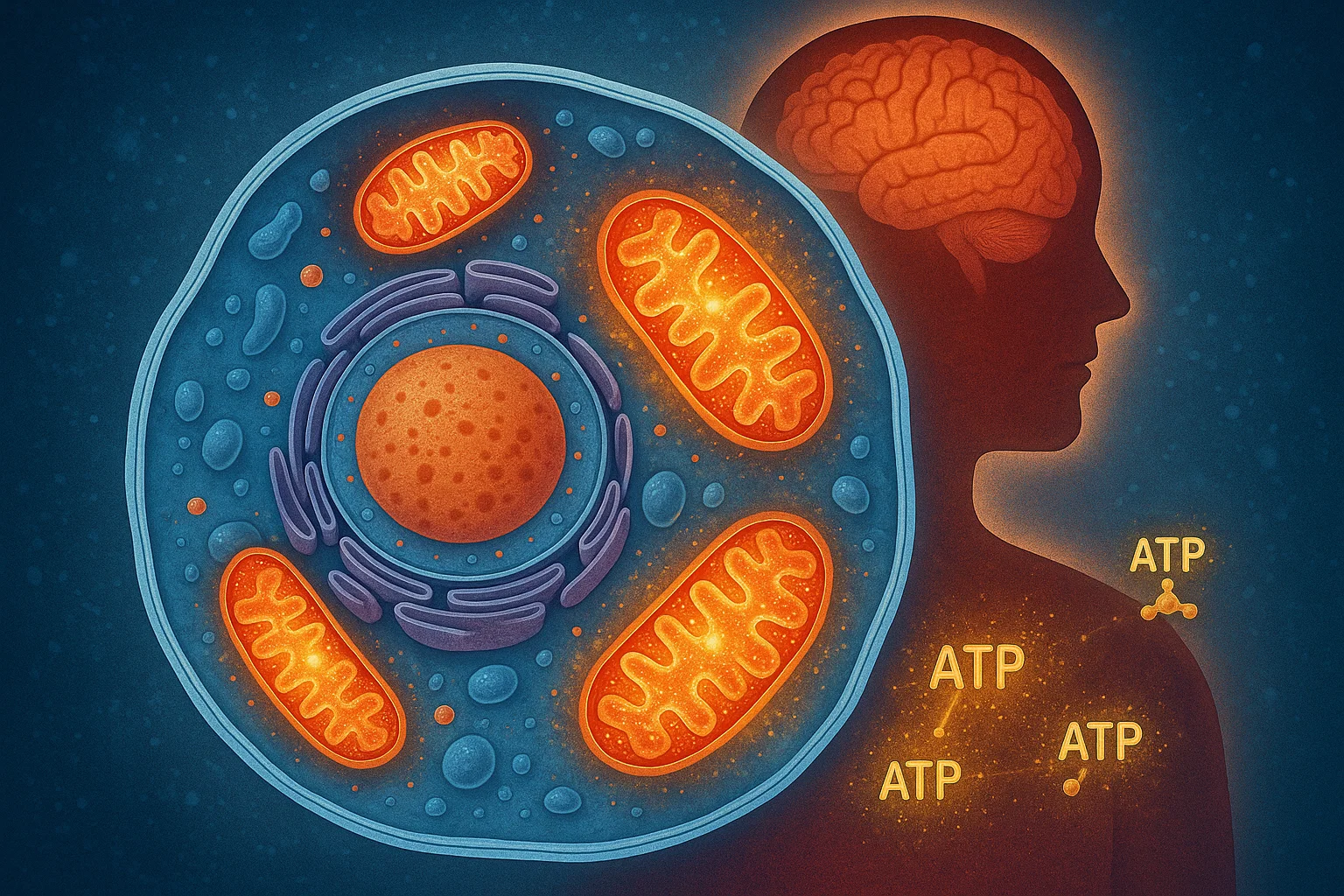Have you ever thought why you experience a sensation of enormous need to sleep after a tiring day? That feeling of sleepiness so commonly referred to as sleep pressure is not merely a feeling of tiredness but is also much embedded in your physiology. In a very interesting study published in Nature, researchers delved into the role of mitochondria, which are the little energy generating powerhouses in your cells, in propelling your need to sleep. What a revolutionary study, right? Let us take a deeper look at it in a simplified form and witness how it may transform the way you view your daily sleep.
To understand the role of mitochondria, one must first be aware of what they are and why they are important.
Your cells are said to have battery like structures that are called mitochondria. They generate energy as ATP (adenosine triphosphate) and ATP is used to accomplish almost every activity of your body such as muscle contraction and brain functioning. However, this research shows that mitochondria are capable of a lot more than making energy– they also could make you sleep.
The study, on Drosophila (fruit flies), demonstrates that the activity of mitochondria in the particular neurons is found to affect sleep pressure. This finding is interesting as fruit flies and humans have similar characteristics of biology thus, can be used as an excellent model in the study of sleep. What did that research team discover then, what does it have to do with you?
Science Behind Sleep Pressure
That increasing desire to sleep as the day goes on is termed as sleep pressure. That is the reason why you may experience sleepiness during the afternoon or stick your eyes wide open after having pulled an all-nighter. According to the study, one of the players in this process is mitochondria located in a particular group of neurons called dorsal fan-shaped body (dFB) neurons in flies.
In a nutshell, the electrical activity of these neurons is enhanced when mitochondria in them join up in a process known as mitochondrial fusion. This increase in activity sends an alert to the brain that it should encourage a sleep state. The authors discovered that this process is associated with the interaction of mitochondria, endoplasmic reticulum (another component of the cell) and autophagy (cleaning up the cell). In essence, as your cells are working throughout the day to pack energy and dispose of waste, they produce signals which makes you feel tired.
The major conclusions of the research are as follows:
The findings of the study are full of information, but the following are the findings of the program in simplified manner:
Mitochondrial Fusion and Sleep: In fusing of mitochondria, more productive energy is generated. In the dFB neurons, this was observed to raise the amount of sleep pressure in the fruit fly, posing a rather direct correlation between the desire to sleep and the role of mitochondria.
Sleep History Matters: This one also investigates the effects that sleep history has on gene expression in the dorsal raphe nuclei (DRNs), an area of the brain associated with control of sleep. They used gene-ontology analysis to discover that deprived sleep changed the gene expression of genes associated with mitochondrial functioning functions, linking mitochondria and sleep regulation further.
No alteration of Mitochondrial Shape: It is strange to note that the study indicated that sleep history does not actually alter the actual physical appearance of mitochondria in specific neurons (PMM mitochondria). This indicates that the work of mitochondria is based on its activity rather than its shape that generates the sleep pressure.
Experimental Rigor: This study engaged Drosophila in a controlled manner (12-hour light-dark cycle at 25 o C) fed with some diet. This provided reliable results and with the use of more complex techniques such as flow cytometry and fluorescence microscopy, the cellular processes that were involved could be determined.
Why It is Important to You
What then does this have to do with your sleep? Although the research was done in fruit flies, it builds a gateway into learning how the two organelles affect the sleeping process of human beings. In the event that such processes are present in humans (as it is highly possible), this study might give rise to new methods of enhancing the quality of sleep. An example, is in the case of improving health of the mitochondria via diet, physical activities or even specialized therapies which may aid in controlling sleep routines among individuals experiencing insomnia or irregular sleeping patterns.
These are some of the tactical lessons:
Feed Your Mitochondria: Maintaining healthy mitochondria may be supported by a healthy diet that contains plenty of antioxidants (thought to be berries, leafy greens, and nuts). Scheduled activities also enhance the efficiency of mitochondria, which could help you to sleep better.
Adhere to a Sleep schedule: The study underscores the issue of sleep history on the cellular processes. You would also be able to control sleep pressure due to the consistent sleeping pattern of the mitochondria.
Remain Curious: This study is a reminder that the sleep is a complex biological process. Those who keep themselves informed of new finding could make better choices regarding their health.

Future of sleep research
The given study could serve as a milestone to unlocking the secrets of sleep. It opens the door to potentially finding a biological basis of explaining cellular processes as they relate to our daily body rhythms, and in this case, sleep pressure. Is it possible to one day come up with a solution that explores mitochondria and as a solution to sleep disorders? The options may be thrilling, only time will tell.
At least in the meantime, this study will put into our minds that sleep is not merely about allowing your mind to have a rest, but it is the process that provides your cells with an opportunity to recharge and restore the essential processes. All of this means, then, the next time you get that sleepy urge coming on you should be thankful as your mitochondria are diligently doing their best to put your body in balance.
Resources & Further Reading
Original Study: Mitochondrial origins of the pressure to sleep (Nature)
Mitochondrial Dynamics Primer: NIH Mitochondria Overview
Sleep Homeostasis Explained: Why Sleep Matters (Sleep Foundation)

